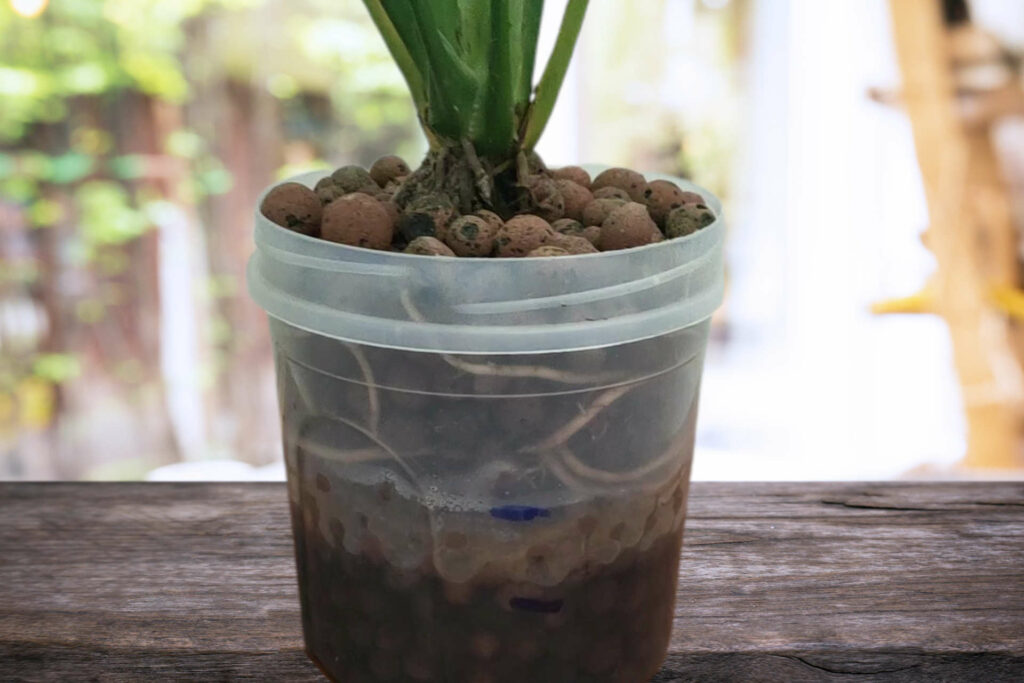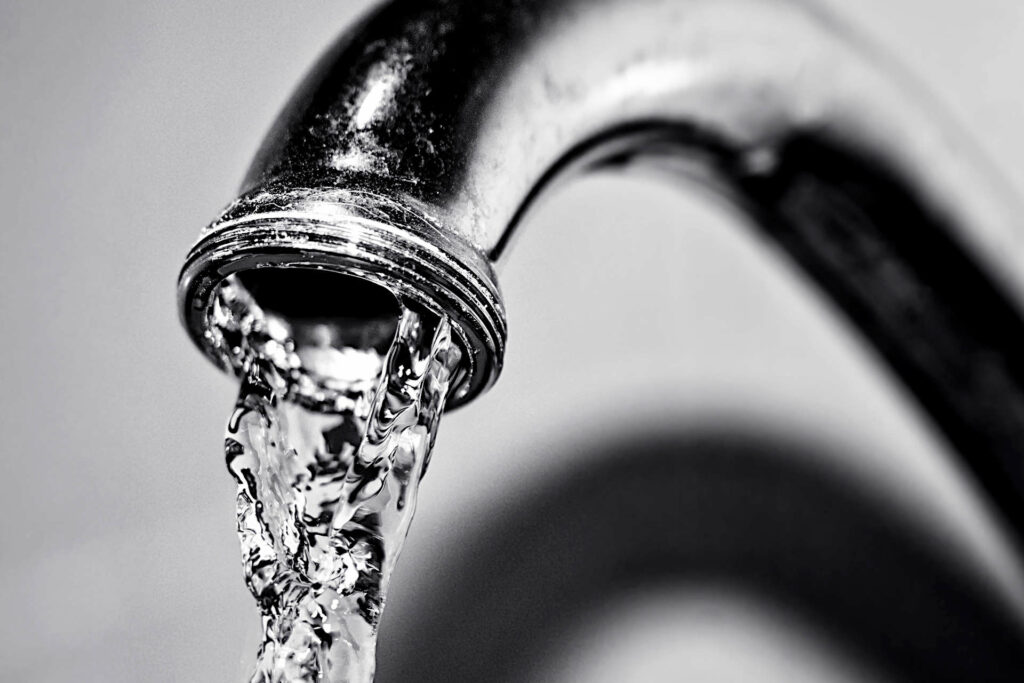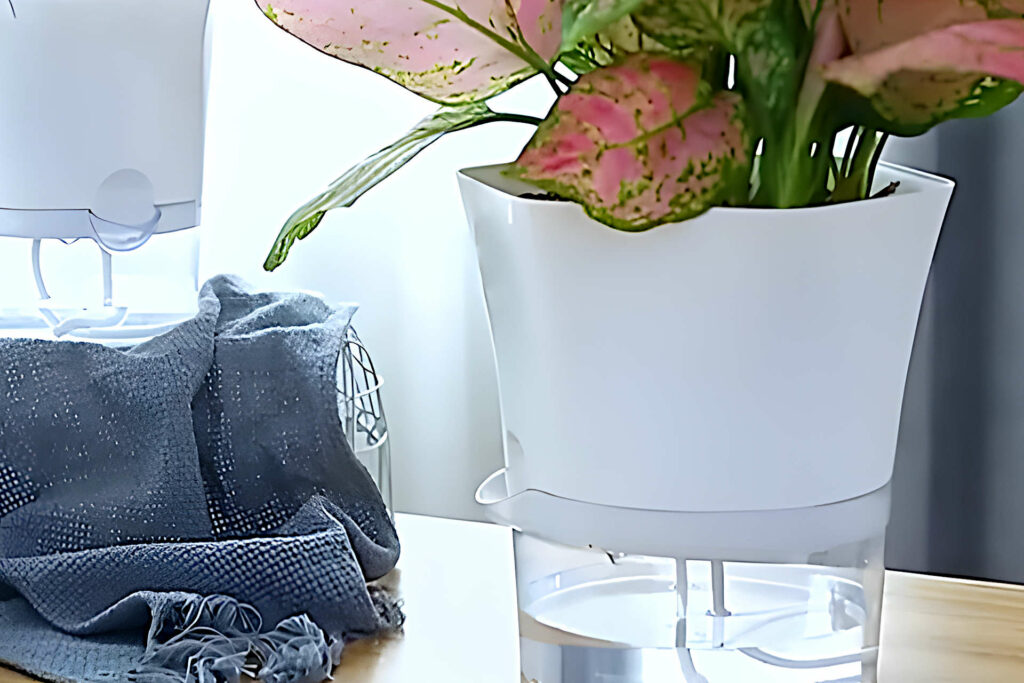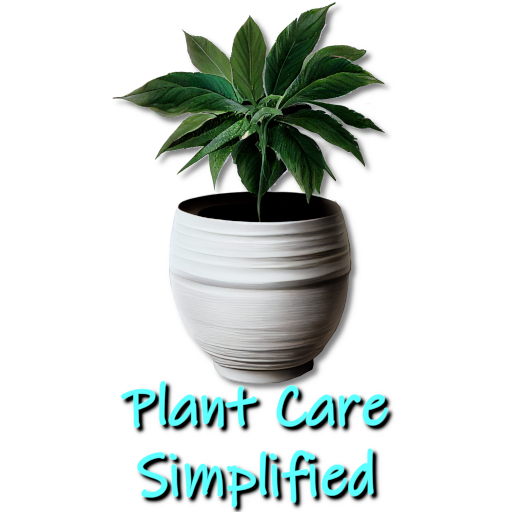Expert Tips for Watering Your Variegated Peace Lily Planted in LECA
Kim is passionate about helping people create beautiful, healthy indoor spaces that are filled with plants. Kim believes that plants make us happier, healthier human...
- Using LECA allows you to observe moisture levels easily.
- The role of light plays an important role in the amount of water your variegated peace lily requires.
- Avoid using tap water as it can contain additives detrimental to your plant's growth.
- There are considerable advantages to adding beneficial bacteria to your nutrient solution.
Growing your variegated peace lily (Spathiphyllum) in LECA (Lightweight Expanded Clay Aggregate) offers several advantages, including easily monitoring moisture levels in the growing medium. To ensure that your plants receive the right amount of moisture, you should watch the solution levels in the pot and top up the solution as needed.
Step-By-Step Guide
Following is a step-by-step guide to caring for your plants when using LECA as a growing medium:
- Monitor the solution levels in the pot regularly. When growing in LECA, you want to ensure that the root ball's bottom remains in contact with the solution. You will need to top up the solution every four or five days.
- If you are using a conventional potting mix, consistency is the key. Water your plants every 5 to 7 days, or test the moisture levels using a chopstick or knitting needle. If the needle is dry, it's time to water your plants.
- Add standard liquid house plant fertilizer to the potting mix every six weeks. The fertilizer will provide your plants with the nutrients they need to thrive.
- If growing your plants in LECA, you can create a nutrient solution by steeping fallen leaves in water for three or four days. Alternatively, you can use commercial products to provide the necessary nutrients for your plants.
The process above describes the partially submerged method of planting with LECA. However, if using the nutrient wick method, the variation in the procedure would be to monitor the water level in the reservoir and top up accordingly.
The Role Light Plays In Watering

Light is essential in determining how much water a house plant needs. Plants use light as a source of energy to produce their food through photosynthesis, and this process requires water, so plants that receive a lot of light will typically need more water than plants that receive less light.
Plants grown in bright, direct sunlight need more water than those grown in lower light conditions. The plant type will also determine how much water it needs. Peace lilies variegated enjoy low light conditions, but seasonality can still impact a plant's water requirements.
What Is in Your Tap Water?

The mineral and additive content of the water used for plants potted with LECA is an important factor to consider when caring for your plants.
The difference between tap and distilled water is that the latter has parts per million (PPM) level of 0, meaning that it does not have mineral content. Tap water, on the other hand, can have a PPM level between 20-300 because of the various additives that are put into it. Using a PPM meter, you can discover the levels that will measure your water's PPM and electrical conductivity (EC) values.
Tap water's mineral and adaptive content are essential to consider when watering your plants, as they can impact a plant's growth and development. Tap water usually contains calcium and magnesium, which are necessary for plant growth. However, it often contains other additives, such as fluoride and even small amounts of chlorine which can be detrimental to plants.
Using Distilled Water
To ensure that no harmful elements are contained in the water you use for your nutrient solution, it is easier to use distilled water and add essential minerals with other liquid nutrients.
You can obtain calcium/ magnesium additives from hydroponic stores or online retailers such as Amazon, with Cal/Mag being one of the best options. You should always follow the instructions on the nutrient solution and only add the recommended amount of minerals. By being aware of the mineral content of the water you use and making adjustments as necessary, you can help your plants thrive.
Fertilizer for Nutrient Solution
Beyond the calcium and manganese content, a general fertilizer for a nutrient solution for LECA typically contains a balanced blend of essential nutrients that plants need for healthy growth. These nutrients include the main macronutrients such as nitrogen, phosphorus, and potassium and micronutrients such as iron and zinc.
A variegated peace lily requires very little in the way of fertilizer. If planted in a soil-based medium, you would add it every six to eight weeks. When potting with LECA, you can replicate this by adding a few drops of a commercial hydroponic fertilizer to your water every six weeks.
Adding Beneficial Bacteria to The Nutrient Solutions

An alternative to commercial hydroponic fertilizer, you can create your own. The easiest way is by adding compost tea to your solution, which has the additional benefit of adding beneficial bacteria.
The benefit of beneficial bacteria is that it adds nitrogen-fixing bacteria to the water or nutrient solution, which can help plants access and use nitrogen from the air. This is called nitrogen-fixing and naturally enriches the nutrient solution with nitrogen, providing plants with the nutrition they need to grow.
Alternatively, suppose you want to encourage beneficial bacteria but use something other than your compost tea. In that case, you can use a commercial product containing nitrogen-fixing bacteria specifically designed for hydroponic systems.
Kim is passionate about helping people create beautiful, healthy indoor spaces that are filled with plants. Kim believes that plants make us happier, healthier human beings, and she loves sharing her knowledge with others so they can experience the joys of plant care for themselves. <a href="https://plantcaresimplified.com/kim-marson/">Read more</a>
More Posts